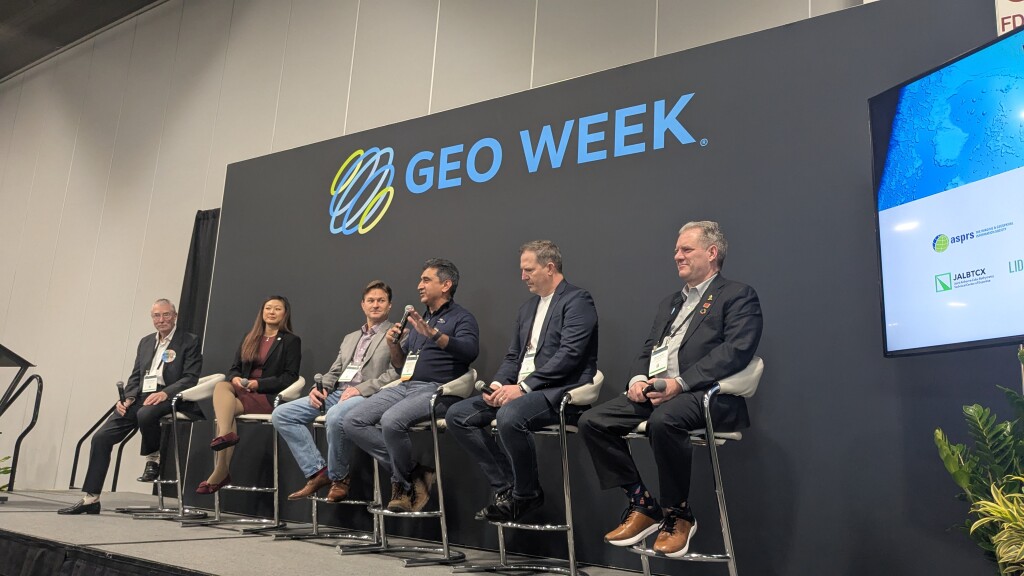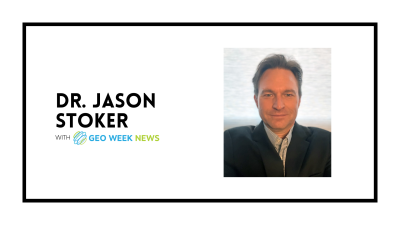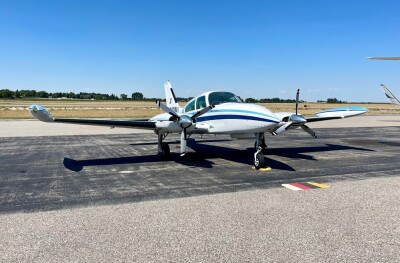Take a lap around the Geo Week exhibit hall floor, and one thing is obvious: lidar is everywhere. From powerful airborne sensors to compact mobile mappers, from high-powered bathymetric systems to lidar-equipped drones, the technology is no longer a niche tool—it’s a driving force shaping industries, infrastructure, and even our understanding of history.
And what better way to celebrate its impact than World Lidar Day? To bring together the lidar enthusiasts, a World Lidar Day panel provided a means for industry pioneers, technology innovators, and forward-thinking leaders to reflect on lidar’s journey—where it started, how far it has come, and where it’s headed next.
The panel of industry veterans included Jason Stoker (USGS), Amar Nayegandhi (Woolpert), My-Linh Truong (RIEGL), Tim Burch (NSPS), and Layton Hobbs (Hexagon), representing a subset of the founding member companies and organizations responsible for organizing the worldwide holiday. Stewart Walker (ISPRS, Lidar Magazine) took the lead as moderator, guiding the panel through some remembrances and stories and getting their take on what’s next.

For those who have been in the field long enough, the stories of skeptical surveyors, cumbersome, experimental sensors, and difficult data workflows were both familiar and garnered many knowing smiles from the standing-room-only audience. The panelists all shared their individual journeys and pathways that led them to their careers in the lidar industry, and they had a lot in common despite working in different companies.
Hobbs managed to dig up an agenda from a 2006 iteration of the International Lidar Mapping Forum (ILMF) conference, a precursor to what has now become Geo Week, and pointed out several sessions that were talking about things that could feasibly still be a session today - High accuracy data registration from multi-sensor fusion and Field experience of combining lidar and digital cameras to solve problems in urban areas - as well as those that demonstrated how far the industry has come. Sessions like Surveys with 1khz green lasers for bathymetry illustrated the huge advancements in bathymetric technology in particular. In 2006, a 1kHz pulse repetition frequency was cutting-edge for bathymetric lidar - but today's bathymetric lidar systems operate at 10x or even 100x that rate.
A bright future
What was once seen as a highly specialized tool for topographic mapping is now uncovering ancient civilizations, revolutionizing autonomous vehicles, improving disaster response, and even making waves in popular culture. Walker noted that Lidar is no longer confined to scientists and surveyors—it’s becoming a household name.
Lidar’s applications today also extend beyond what even its earliest adopters could have imagined. Researchers are using it to scan dense rainforests, revealing lost cities that had been hidden for centuries beneath thick vegetation. Urban planners rely on it to design smarter, more resilient cities. Emergency responders use it to predict and mitigate flood risks.
And, as Stoker mused, the technology is still pushing forward. Early on in his career, Stoker and his colleagues dared to imagine a big future for lidar, asking themselves, “Wouldn’t it be great if we had lidar data for the entire country?” The idea, once a far-off dream, is now on the cusp of reality thanks to large-scale initiatives like the 3D Elevation Program (3DEP), which is continuing its efforts to provide comprehensive lidar coverage of the United States.
While lidar has come a long way, the panelists made it clear: the best is yet to come. Advances in data processing, higher-density sensors, and improved accessibility are set to take lidar to new heights—literally. Advances in AI, object recognition and classification are making it easier than ever to process massive point clouds, extract meaningful insights, and automate workflows. Miniaturization and mobility are driving lidar into new markets, from UAV-based systems to consumer applications. Sensor innovation is pushing the limits of what we can see, mapping deeper waters, denser forests, and even underground structures with greater precision.
As the panel wrapped up, the energy in the room was undeniable. Lidar is no longer just a tool—it’s a movement, a revolution, a way of seeing the world in unprecedented detail.
And if the excitement at this year’s World Lidar Day is any indication, the industry will have even more to celebrate in the years ahead.






